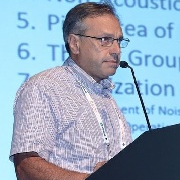Soundscape: A Multidisciplinary Approach for Environmental Sustainability
A special issue of Sustainability (ISSN 2071-1050). This special issue belongs to the section "Environmental Sustainability and Applications".
Deadline for manuscript submissions: closed (31 May 2023) | Viewed by 38673
Special Issue Editors
Interests: soundscape in urban and natural areas; eco-acoustics; soundscape in marine habitats; noise mapping
Special Issues, Collections and Topics in MDPI journals
Interests: soundscape in urban and natural areas; eco-acoustics; soundscape in marine habitats; noise mapping
Special Issues, Collections and Topics in MDPI journals
Special Issue Information
Dear Colleagues,
This Special Issue aims at bringing together researchers of different disciplines in order to provide a multidisciplinary overview on how different sounds contribute to shape the environment and how their perception influences the behaviors of humans and animals.
The agglomeration of people and sound sources is a major cause of urban noise, which has become the soundtrack of daily life and has harmful effects on the health and wellness of inhabitants. Thus, over the years, sound has mainly been considered epidemiologically as “noise”, and most environmental policies have focused on noise control and reduction. Unfortunately, reducing sound levels does not necessarily lead to improved quality of life in urban and rural areas. This is why the soundscape approach to the management of acoustic environments has become increasingly important, as it focuses on how people and animals actually perceive and experience their acoustic environments. This approach has also shown to be useful in protecting natural (green and wild) areas, as well as sea life, which is even more exposed to noise pollution.
The perception of the soundscape and the responses and outcomes are highly dependent on the context and relevant contextual factors, not limited only to the acoustic features. Thus, soundscape combines physical, social, and psychological approaches to the characterization, management, and design of natural and urban sound environments. Soundscape research involves not only physical measures but also the cooperation of human and social sciences to account for the diversity of soundscapes across countries and cultures, and it considers environmental sounds as a “resource” that is able to mask unwanted sounds, rather than a “waste”.
Studies have shown that noise is a “perceptual barrier” for the use of environment, similar to physical obstacles in the urban context. Given this importance of sound as part of the environment experience, scientists have sought to develop strategies to research and influence the relationship between urbanites and their soundscapes: on one hand to minimize the potential negative effects of sound on urban life, and on the other hand to maximize the opportunities for enjoyment or relaxation that urban sound offers. What public space users hear and how they evaluate it in relation to their performed or intended activities can influence users’ engagement with their spaces, as well as their assessment of the suitability of public space for their needs or expectations.
Studies in eco-acoustics and marine acoustics will also become important cognitive and decision-making tools for the sustainability of our environment and wildlife conservation.
This Special Issue is an invitation to encourage governmental organizations to include the complexity of urban and natural soundscape into the current regulatory system and to consider it as a guideline for sustainable urban planning and the creation of sustainable environments.
Prof. Giovanni Zambon
Dr. Roberto Benocci
Guest Editors
Manuscript Submission Information
Manuscripts should be submitted online at www.mdpi.com by registering and logging in to this website. Once you are registered, click here to go to the submission form. Manuscripts can be submitted until the deadline. All submissions that pass pre-check are peer-reviewed. Accepted papers will be published continuously in the journal (as soon as accepted) and will be listed together on the special issue website. Research articles, review articles as well as short communications are invited. For planned papers, a title and short abstract (about 100 words) can be sent to the Editorial Office for announcement on this website.
Submitted manuscripts should not have been published previously, nor be under consideration for publication elsewhere (except conference proceedings papers). All manuscripts are thoroughly refereed through a single-blind peer-review process. A guide for authors and other relevant information for submission of manuscripts is available on the Instructions for Authors page. Sustainability is an international peer-reviewed open access semimonthly journal published by MDPI.
Please visit the Instructions for Authors page before submitting a manuscript. The Article Processing Charge (APC) for publication in this open access journal is 2400 CHF (Swiss Francs). Submitted papers should be well formatted and use good English. Authors may use MDPI's English editing service prior to publication or during author revisions.
Keywords
- Soundscape
- Eco-Acoustics
- Marine Acoustics
- Sustainable urban and environmental planning






